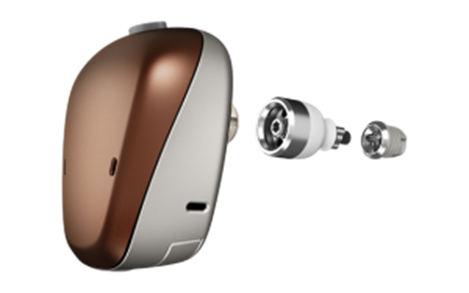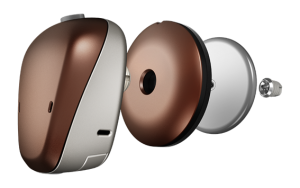Bone conduction implants can also assist people who have hearing loss in only one ear (single-sided deafness) in overcoming the ‘head-shadow effect’ (the lack of ability to know where the sound is coming from, based on not being able to hear equally from both ears).
A bone conduction sound processor is connected to a surgical implant which allows for reliable transmissions of sound to the inner ear. The bone conduction implant system is designed to produce useful hearing sensations by transmitting sounds through the skull bone behind the ear to the inner ear using vibration.
The Baha® bone conduction implant system consists of an externally worn sound processor and an implant which is placed in the skull bone behind the ear. Two different types of implants can be used in the Baha® bone conduction system.

 The Baha® Connect system uses a small titanium abutment which is surgically implanted behind the ear.
The Baha® Connect system uses a small titanium abutment which is surgically implanted behind the ear.

